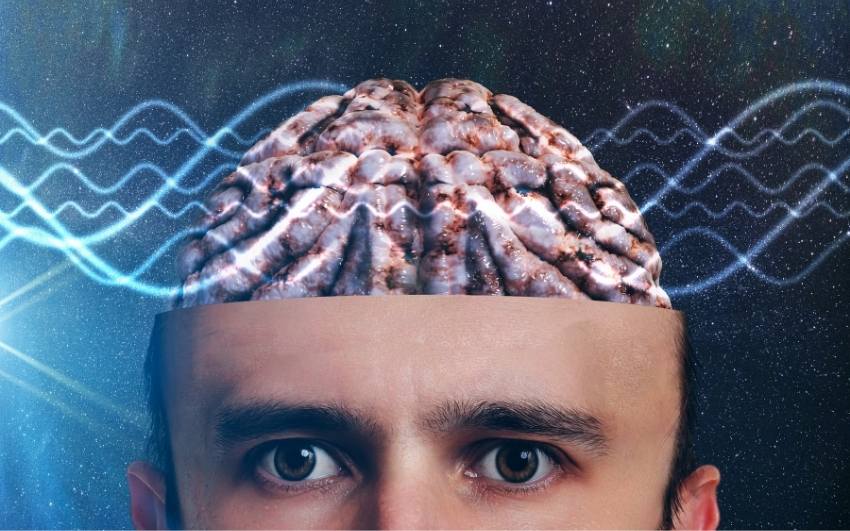On this page

How The Map of Consciousness Works In Your Life
A new approach to comprehend yourself and your manifesting ability is the map of consciousness.
The Map of Consciousness is significant because it can assist you in comprehending how your life functions. It can show you which aspects of your life you have control over and which you don’t.
This knowledge might assist you in focusing on the things that matter to you and making necessary changes in your life.
The Map of Consciousness can also assist you in identifying your vibratory level and changing it to enhance your life.
You can transform your life by changing your beliefs.
What is the Definition of Consciousness?
Another important question, which I am not qualified to answer but will try: consciousness and awareness are related but not identical.
We become aware of ourselves through observation, implying that consciousness appears to pertain to our complete orientation on some level.
It’s a disorder that affects our actions and behaviors. You could think of it as a lens through which we see reality.
Measurement of Consciousness
The map of consciousness was created using kinesiology. Muscle testing operates in this manner. Man’s kinesiologic response to stimulus suggested a potential to distinguish positive from harmful stimuli, as well as truth from lie, according to Dr Hawkins’ research on the map of consciousness.
For more than two decades, the study examined the outcomes of millions of calibrations of words, thoughts, images, art, music, and world leaders in practically every field of human endeavor.
By examining the facts, it efficiently establishes the anatomy of consciousness.
Process of Kinesiology Testing

In essence, during two-person muscular testing (and apologies to any kinesiology practitioners reading this), what happens is as follows:
You’re encouraged to think about Gandhi first, then Hitler to see if your responses to the wonderful and horrible were “normal.”
You struggle against the tester as he quickly attaches two fingers to your extended wrist while you ponder the hero or antagonist. When we think of Hitler, we lose muscle strength (though I assume this isn’t the case if you’re a psychopath.)
After the individuals were found to have typical reactions, David read to them in his lab descriptions of their state of consciousness. It is possible to discover the correct number when the arm “breaks.”
So, without further ado (and I’m not sure how this works), let’s get this party started. If you’ve made it this far after all of that, you’re ready for more, and this isn’t even your first rodeo; congratulations! Now is the moment to step up your game.
Why can’t you tell the difference between truth and falsehood because of your level of consciousness
We must see this source of intention as essential truth…
Hawkins discusses the incapacity to separate truth from deception as a differentiating property of energies that either strengthen or weaken you throughout Power vs Force.
As a result, any incorrect thinking is something that will weaken you.
People who are calibrated below 200 on his 1 to 1000 scale, according to him.
Anyone with a calibration level of less than 200 lives in a world where they can’t tell the difference between truth and untruth.
The body, on the other hand, is a perfect aspect of truth.
It comes from a place known as truth.
How The Map of Consciousness Works In Your Life

Dr David Hawkins’ most modest crusade may very well have been mapping human consciousness. But Dr Hawkins’ work – the map of consciousness, which traces 17 stages of awareness and their energy’ calibration values’ – is tremendous in its magnitude.
Dr Hawkins’ ultimate objective in developing the Map of Consciousness was to “overcome the inherent limitation of the human intellect, which is that truth has been mistakenly identified as falsity,” according to his publications Power versus Force and Transcending the Levels of Consciousness: The Stairway to Enlightenment.
I believe that some people will find it a helpful self-awareness tool. Not necessary, but it’s nice if you’re ready to tackle something fascinating. First, what is consciousness? What is the distinction between daily awareness and consciousness? How did David happen upon numerical values for each stage without calculation?
The Map of consciousness – 17 Levels

David’s map, as I said, has 17 degrees of consciousness. You’ll undoubtedly bounce back and forth between three to four of them. The states rise from the pits of hell (shame, it appears) toward enlightenment. Anger is above apathy in terms of status. Desire is above apathy in terms of status. I go through these below in brief because they’re pretty explanatory. Reflect on where you rank on the human Richter scale while reading them.
Shame (1-20)
At this level, the person is humiliated, has a low opinion of oneself, and is paranoid. Serial killers, rapists, and moral extremists are among those who vibrate in this range for lengthy periods.
Guilt (30)
Guilt and regret take the place of love in this quadrant. This level encourages devastation.
Apathy (50)
A state of despair and impotence. The homeless, the poor, and the elderly are examples of needy and reliant on others for assistance. There is a sense of hopelessness among the majority of people.
Grief (75)
Feelings of regret, sadness, and loss are prevalent. Many people vibrate at this level in the wake of a tragedy. Grief is a higher pitch than apathy because one becomes more active at this level, albeit sad and mournful.
Fear (100)
At this level, the energy is geared toward anxiety. Fear of rejection, failure, uncertainty, challenges, aging, death, loss, and strangers are all common fears that may be encountered.
Desire (125)
We are incredibly eager at the level of desire. We strive for goals, money, and anything else you can imagine. Desire also attracts us to things. The life view is dismal because one cannot acquire what one wants.
Anger (150)
At this level, the emotion is hate. Resentment, frustration, and revenge are all manifestations of anger.
Pride (175)
People are proud of their belongings and external circumstances. It is in danger since such circumstances can be changed at any moment. Pride leads to denial and conceit.
The herennarian lifestyle is judge-oriented.
Courage (200)
The turning point: this is where force and real power diverge. One sees the world as exciting and full of possibilities at courage. The start of the active pursuit of growth – where there is a gap – marks the beginning of the active pursuit of growth – where there is a gap, the person will act to fill it. It’s conceivable – anything is possible since the individual has access to the power to face life’s challenges.
Neutrality (250)
At this level, you feel secure and trusted. People at this level are non-critical, objective, and see things as they indeed are. Material goods or circumstances do not enslave them, and they can absorb life’s blows. If they cannot obtain anything,
Willingness (310)
With a willingness to do anything and everything, the individual is unconstrained by others’ judgments or restrictions. The life-view is optimistic. At this level, you’ll find individuals who succeed at their jobs in big businesses and companies. Is it possible that they are putting their efforts most beneficially?
Acceptance (350)
Finally, we realize here that we are the creators and sources of our lives, rather than handing part of it over to someone else or a different entity. We are aware of the social structures in life and can differentiate against (limiting) ideas, opinions, and conditioning.
Reason (400)
Understanding and rationality are the emotions. Before reaching judgments, one goes through a vast quantity of information and examines it to the tiniest possible detail. Reasoning can be lured into over-intellectualization, resulting in data abstraction or preoccupation. The view of life is significant.
Love (500)
Unconditional love is unconditional. Love that is pure, unchanging, unwavering, and unaffected by external circumstances is what this symbolizes. The life-view is benign. Hawkins states that only 0.4 per cent (1 in every 250 persons) of the population ever reaches this stage of development (0.4% = 1 in 250 people).
Joy (540)
Serenity and love are the most prominent feelings. This is an inner pleasure that comes from every minute of existence rather than from a source outside of oneself. Completeness is seen as the ideal life view. Near-death experiences have the potential to shift people temporarily into this realm.
Peace (600)
The emotion is a delight. There is no longer a distinction between the observer and the observed at this level. Only one in ten million people reach this stage.
Enlightenment (700-1000)
It is nigh unto impossible to put into words. This is the peak of humanity’s consciousness development. Krishna, Buddha, Jesus, and Mother Theresa are just a few of history’s outstanding personalities who have reached this level.
The stage of integrity
Courage, is at level 200 on the map of consciousness, is when our most incredible shift occurs.
Also known as the level of integrity, 200 is where we begin to distinguish truth from lies, reality from Ego.
The lower levels are challenging. This is why we are compelled to learn and develop deeper inside us.
As David points out, the United States as a whole is presently at 204 (though I note the irony of writing this on the day that President Donald Trump’s name becomes a reality).
A fast method to assess your progress along the continuum of map of consciousness is to check how you’re doing against other people.
Another approach to figuring out your primary feeling is considering how you react when things are difficult. Do you become frightened and close off (fear)? Or do you start screaming at people (anger)? Or do you develop a defensive stance (pride)?
The book transcends the levels by including instructions on how to move from one level to the next.
Characteristics of higher versus lower thinking
Transcending the levels has a lot of valuable lists at each level of awareness, such as these excellent one-word attachments and aversions. I believe these lists are highly beneficial for self-awareness.
The ambitions and aversions listed below are from the level of pride. I recommend reading the book if you want to see other lists.
- Status versus Common/ordinary
- Vain and proud versus Humility
- Special versus Ordinary
- Important versus Nobody
- Pride – attractions versus aversions
- Be more versus Be less
- Opinionated versus Silent
- Be right versus Wrong
- Admired versus Looked down on
- Superior versus Inferior
- Noticed versus Ignored
- Better than versus The same
- Succeed versus Fail
- Attractive versus Dull
- Insider versus Excluded
- Thrill versus Dull, pedestrian
- Exclusive versus Common
Hawkins also created charts showing the characteristics of lower and higher thinking.
Below is a table showing them.
- Characteristics of lower versus higher mind
- Accumulation versus Growth
- Ruled by emotions/wants versus Ruled by reason/inspiration
- Time = restriction versus Time = opportunity
- Remember versus Reflect
- Acquire versus Savor
- Think versus Process
- Maintain versus Evolve
- Denotation versus Inference
- Focus on present/past versus Focus on present/future
- Blames versus Takes responsibility
- Careless versus Disciplined
- Content (Specifics) versus Content plus field (conditions)
- Concrete, literal versus Abstract, imaginative
- Limited time, space versus Unlimited
- Personal versus Impersonal
- Form versus Significance
- Focus on specifics versus Generalities
- Exclusive examples versus Categorize class – inclusive
- Reactive versus Detached
- Plan versus Create
- Recall events versus Contextualize significance
- Particularize versus Generalize
- Passive/aggressive versus Protective
- Pleasure and satisfaction versus Fulfillment of potential
- Definition versus Essence, meaningful
- Pedestrian versus Transcendent
- Physical and Emotional survival versus Intellectual development
- Motivation versus Inspirational intention
- Examples versus Principles
- Morals versus Ethics
- Finally, here is a list of prevailing attitudes that are lower and higher mind.
- Impatient versus Tolerant
- Attitudes of a lower versus higher mind
- Desire versus Value
- Competition versus Cooperation
- Demand versus Prefer
- Utilitarian use versus Seeing potential
- Constrictive versus Expansive
- Upset, tension versus Calm, deliberate
- Control versus Let go, surrender
- Ego-self directed versus Ego, plus other-oriented
- Literal versus Intuitive
- Design versus Art
- Personal & family survival versus survival of others
- Exploit, use up versus Preserve, enhance
- Exploits life versus Serves life
- Pretty, attractive versus Aesthetics
- Naive, impressionable versus Sophisticated, informed
- Guilt versus Regret
- Statement versus Hypothesis
- Pessimist versus Optimist
- Gullible versus Thoughtful
- Force versus Power
- Excess versus Balance
- Smart, clever versus Intelligent
- Insensitive versus Sensitive
- Callous versus Merciful
- Rate versus Evaluate
- Childish versus Mature
- Particularize versus Contextualize
- Terminal versus Germinal
- Closure versus Open-ended
- Sympathize versus Empathize
- Critical versus Accepting
- Want versus Choose
- Avoid versus Face and accept
- Scepticism versus Comprehend
- Attacks versus Avoids
- Condemning versus Forgiving
Conclusion
David Hawkins’ map of consciousness is an excellent resource for spiritual and personal growth tools. I’d recommend Transcend the Levels to anyone interested in pondering life, human nature, and power dynamics.
The Enneagram and Spiral Dynamics are other systems that I enjoy a lot (and utilize far more than most people realize).
See also the scale of consciousness

Petri Maatta is a mindset coach and neuroscience-focused author with 15 years of experience in personal transformation and success psychology. After seven years of business failures, he discovered the power of manifestation through a Fortune 500 mentor. Now, he shares neuroscience-backed strategies through DreamMaker membership, helping others transform their businesses and lives on their own terms.
Read My Story here.
Share This Story, Choose Your Platform!
You want to manifest a new car, but you’re wondering: Does this really work? Here’s
Many smart individuals are often linked with having a high IQ. However, according to emotional
According to online dating statistics over 90% of people believe in love at first sight,




